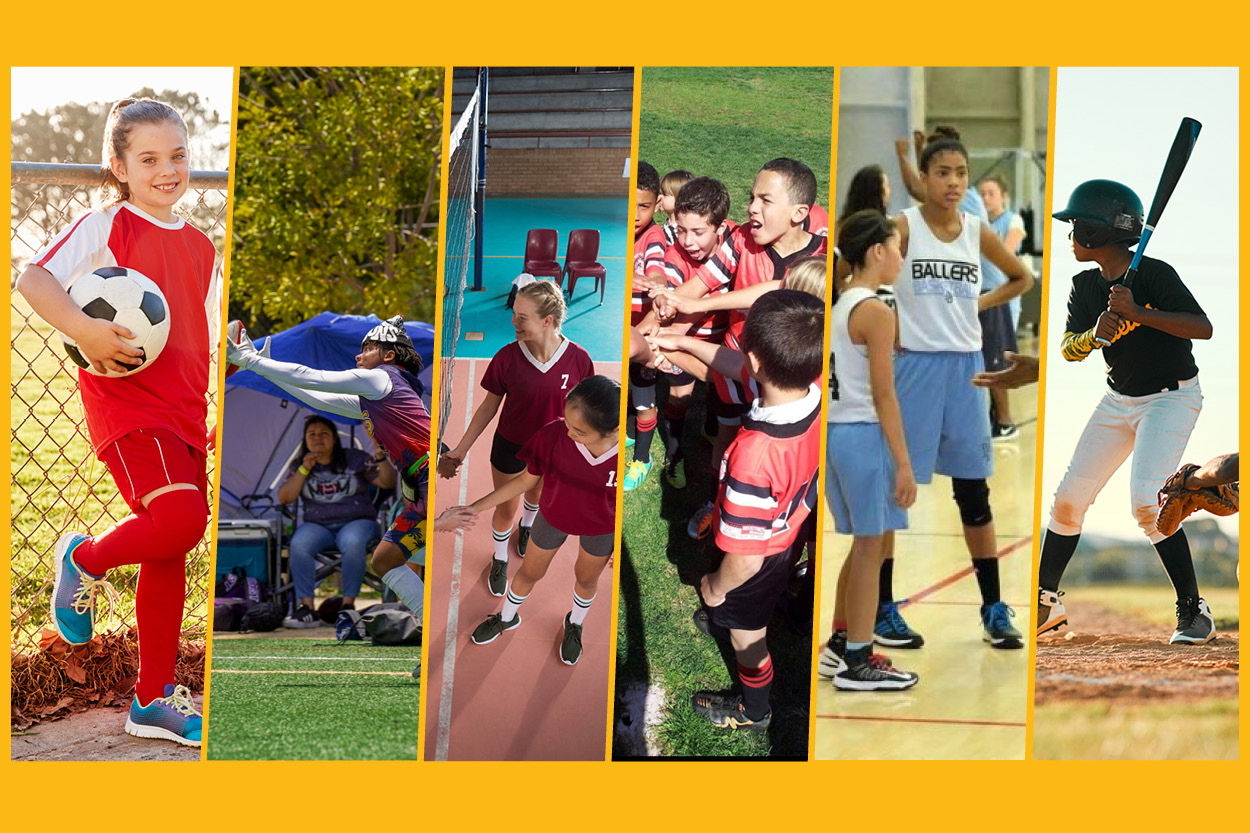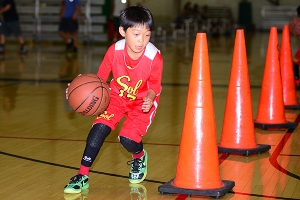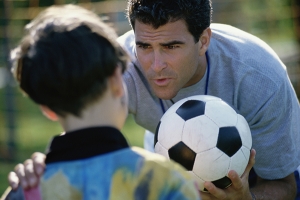Springtime isn’t just for baseball anymore. More and more kids are suiting up for lacrosse—a fast-paced, high-adrenaline game that’s said to be a combination of soccer, hockey, and basketball. A true American pastime, lacrosse was first played by Native Americans centuries ago on huge fields with more than 100 players on each team.
Modern day boys’ lacrosse is played with 10 players on the field for each team—three attackers, three midfielders, three defenders and a goalie. Girls are allowed two extra midfielders for a total of 12. You score by shooting the ball into your opponent’s goal. The challenge is using a lacrosse stick (no hands!) to catch, carry, and pass the ball. Boys’ lacrosse adds an element of physical contact–having the boys wear pads and allowing different forms of checking. Girls skip the padding and have less contact.
Sound like fun? Nicknamed the “fastest game on two feet” lacrosse has exploded onto the sports scene in the last decade. US Lacrosse reports that 680,000 players participated on lacrosse teams in 2011. That’s 60,000 more than the year before, making lacrosse one of the fastest growing team sports in America. At the high school and NCAA levels, lacrosse is the number one, fastest growing sport. Turn on ESPN, CBS Sports Network or NBC Sports and you might just find one of the 100 plus collegiate and professional games that are broadcast each year.
Getting Started
With all this excitement surrounding lacrosse, there are plenty of opportunities to get your kid in on the fun. You may be wondering, what’s a good age to get the ball rolling? There’s no perfect age, although many lacrosse programs start in first grade. Consider your child’s personality and skill set, and for boys remember that lacrosse is a contact sport—which only adds to the fun for many boys! Is your son ready for the physical side of lacrosse? You know your kiddo, and are the best judge of his interests and abilities.
Tom Devine, league president for the Scripps Ranch Lacrosse Association (SRLA) recommends borrowing a friend or neighbor’s lacrosse stick to get a taste of the sport. Have your child try scooping the ball off the ground and passing it back and forth with a friend. Free lacrosse clinics are offered by most local lacrosse programs. Loaner equipment and sticks are provided, so all you need to do is show up and see if your child likes it.
Carl Stepnowsky, co-director of the girls’ program at SRLA, says the best thing to do is “get a stick in their hand and come out to a clinic…we teach them basic skills like how to hold a stick, how to scoop the ball off the ground, how to catch and how to cradle.”
If your child is hooked after the clinic, sign them up for a season. Check out the US Lacrosse-San Diego Chapter for info on local leagues and teams.
Equipment
Once your child joins the rookie ranks, he’ll need the proper equipment. Because boys are allowed more physical contact during games, they need more protective equipment than girls. Boys need a helmet, lacrosse stick, shoulder pads, arm pads, gloves, mouth guard, athletic cup and cleats. Many sporting goods stores and online sites offer lacrosse “starter kits.” You can expect to spend about $200 to get your son suited up.
Girls need goggles, a lacrosse stick, mouth guard and cleats. A girls’ lacrosse starter kit will set you back around $85. Many lacrosse leagues and clubs have coupons for discounts on starter kits, so be sure to ask before you buy.
What to Expect
After your child signs up for a season, they’ll be assigned to a team and begin practicing. Depending on the program, they’ll typically start with one or two practices per week and then add one or two games per week as the season gets going. This is an action packed, high-octane sport so expect a lot of movement during both practices and games. Bring plenty of water and healthy snacks, and have fun cheering on your superstar.
Beyond Pee Wees
Lacrosse is a great sport to grow with your child. As lacrosse’s popularity continues to skyrocket, more middle and high school teams are being formed. Chances are your child’s middle school or high school will have a team.
If lacrosse turns into a passion your child excels at, one of the surprise benefits may be a college scholarship! Thousands of NCAA lacrosse scholarships go out to boys and girls each year. For example, this year Maranatha Christian School (MCS) had two high school lacrosse players, Cooper Rodgers and Michael Trent, receive NCAA scholarships to play lacrosse at Adams State University. Even without a college scholarship, there are plenty of opportunities to keep playing lacrosse in college and beyond.
Bill Rodgers, MCS’s associate athletic director and head varsity boys’ lacrosse coach says, “There are way more lacrosse programs opening up at the college level…that makes lacrosse the number one sport right now that you can matriculate from high school and play in college–whether you get a scholarship or not.”
Give it a try, and see if lacrosse becomes a lifelong passion for your child.
Why get involved? Benefits of Lacrosse
The many upsides of lacrosse include:
Physical fitness: Lacrosse is a great way to get moving and get in shape! Tom Devine says, “Lacrosse is a moving sport. Everybody is running. You’re 100 percent of the time in motion.” The fast pace of lacrosse offers a great cardio workout. In addition, throwing and catching is excellent for developing hand eye coordination.
Teamwork: Lacrosse mom, Kim Quinlan, explains that one of the best things for her son Cole is “just being a part of a team and being able to work together. That’s the key. It just doesn’t take one person…it takes the whole team.”
Learning to work as part of a team will benefit your child both on the field and off.
Fun and friendship: Lacrosse can be a blast, and sharing that fun can lead to enduring friendships. Sign up for a season with your buddies or make new friends on the team.
Equal opportunity: Think lacrosse is mostly for boys? Not anymore—36 percent of kids playing lacrosse are girls. In addition, lacrosse can be a fit for kids with a broad range of body types.
Stepnowsky says, “When you think about football you need size. Basketball, you need height. The cool thing about lacrosse is that if you have some good stick skills and you’re on the faster side, you can really make an impact on the game. It’s kind of a neat game because it can attract a wider range of kids.”
------------------------
Freelance writer Jessica Baldis lives in San Diego with her family.
Published: February 2013



